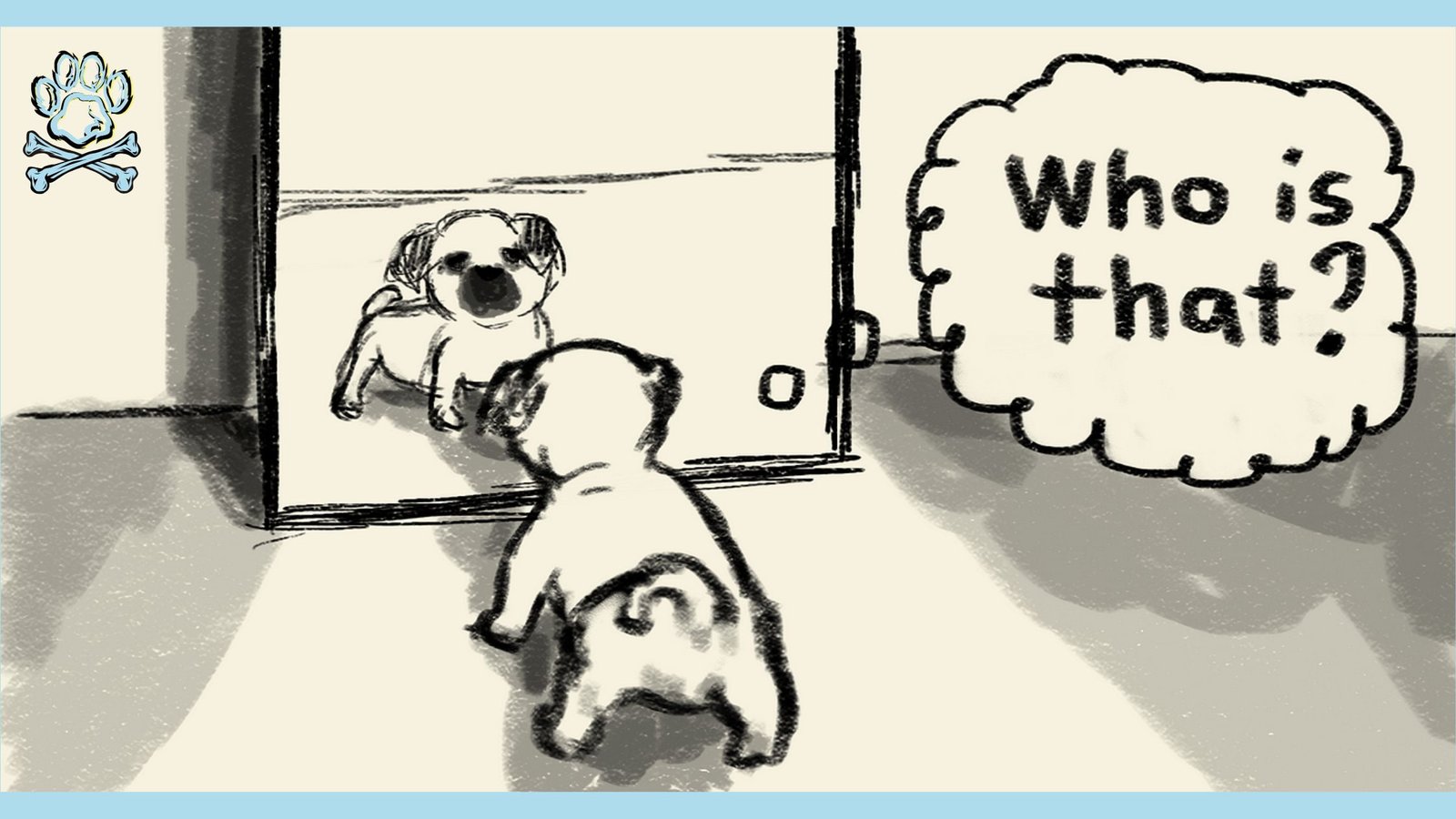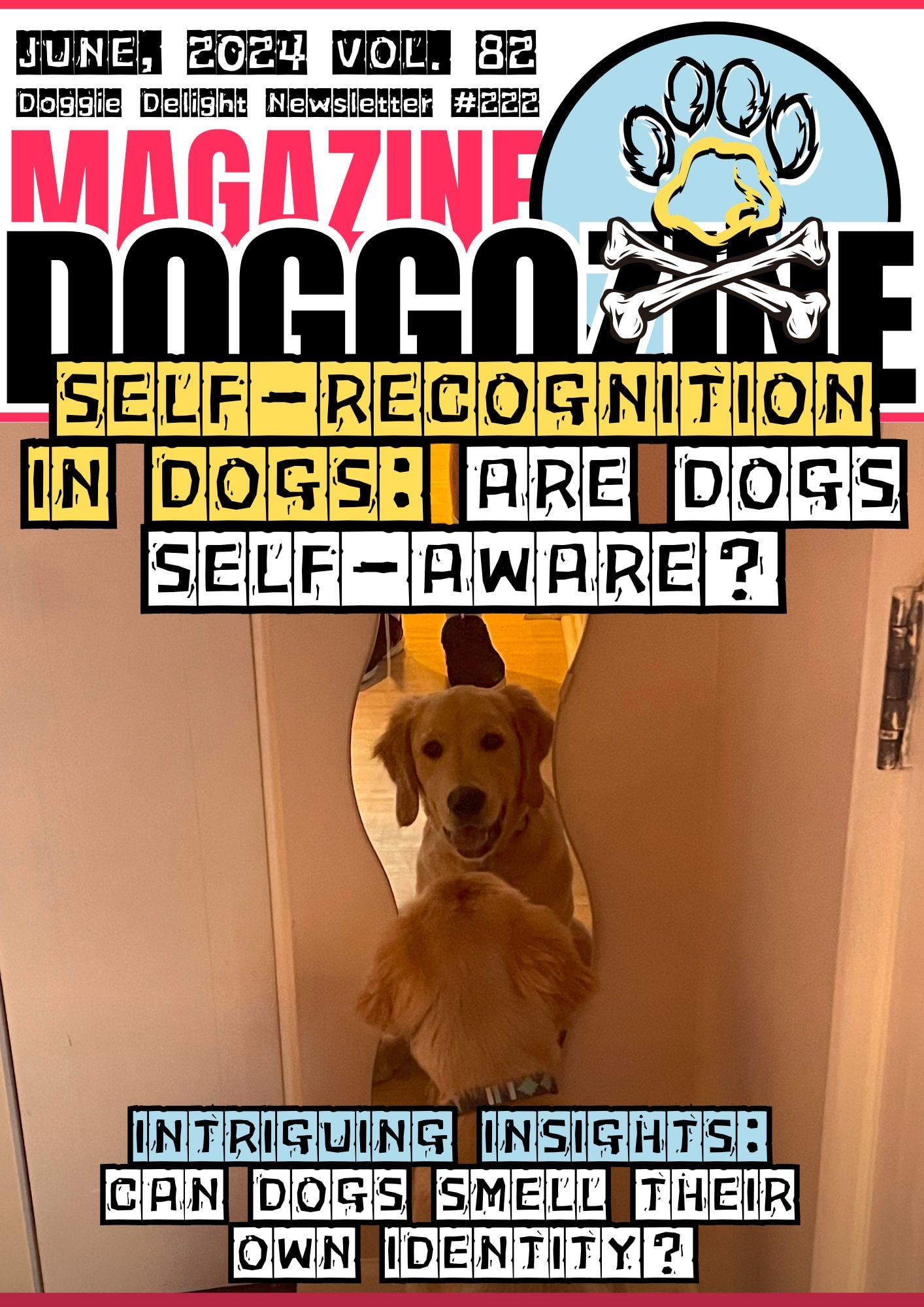
UNVEILING THE TRUTH BEHIND SELF-RECOGNITION IN DOGS
Is your furry friend truly aware of their own identity? The intriguing world of self-recognition in dogs unveils surprising truths that challenge traditional beliefs. While dogs may not ace the mirror test like some of their intelligent counterparts, they excel in olfactory identity cues, relying more on scent than sight.
Intriguing insights: Can dogs smell their own identity?
Dive deep into the realm of dog cognition with our exploration of how man’s best friend perceives themselves through their unique sense of smell. From the limitations of visual self-awareness tests to the significance of olfactory cues in dog behavior and identity, join us on a journey that sheds light on a dog’s perception of self. Let’s rethink canine self-awareness together and discover the fascinating complexities that shape our beloved pets’ understanding of their own existence.
Self-Recognition in Dogs: Exploring the Mirror Test
Have you ever wondered if your furry friend recognizes themselves in the mirror? The mirror test has been a popular tool to assess self-recognition in various animals, including our beloved canines. This test involves placing a mark on the animal’s body and observing their reaction when they see their reflection. If the animal touches or investigates the mark, it suggests they recognize themselves in the mirror.
However, despite dogs’ impressive cognitive abilities, they often struggle with this test. Does this mean they lack self-awareness? Not necessarily! It’s important to consider that the mirror test was originally designed for primates, who rely heavily on visual cues. Dogs, on the other hand, are more attuned to their sense of smell.
In fact, a study by Alexandra Horowitz found that when presented with their own urine, dogs spent more time sniffing it compared to the urine of other dogs. This suggests that dogs may have a form of self-recognition based on olfactory cues. So, while dogs might not pass the traditional mirror test, it doesn’t mean they lack a sense of self. It’s just that their self-recognition manifests differently than ours.
🔑 Key Points: The mirror test, while useful for assessing self-recognition in some animals, may not be the best tool for evaluating dogs’ self-awareness due to their reliance on olfactory cues rather than visual ones.
The Limitations of the Mirror Test for Self-Recognition in Dogs
- Dogs heavily rely on their sense of smell for navigation and communication
- The mirror test is primarily visual, which may not align with dogs’ natural abilities
- Dogs’ reactions to mirrors can vary, from ignoring them to treating the reflection as another dog
Intelligence and the Concept of Self in dogs
When it comes to intelligence and self-recognition dogs often receive comparisons to highly intelligent creatures like chimpanzees, dolphins, and orcas. These animals demonstrate self-awareness by recognizing themselves in mirrors. However, intelligence manifests differently across species. Just because dogs struggle with the mirror test doesn’t mean they lack cognitive abilities.
In reality, dogs exhibit remarkable problem-solving skills. They possess emotional intelligence. Dogs understand human gestures and commands. They also form strong bonds with humans and show empathy. While dogs may not visually recognize themselves, they likely have self-awareness. This stems from unique experiences, relationships, and olfactory cues.
A dog’s sense of smell is vastly superior – 10,000 to 100,000 times more acute than ours! Scents help them identify individuals, detect emotions, and navigate environments. This suggests dogs’ self-recognition ties more closely to olfactory experiences rather than visual ones.
🔑 Key Points: Evaluating canine intelligence and self-awareness requires considering their unique cognitive abilities and sensory strengths. Visual tests like mirrors may not fully capture their self-recognition capabilities.
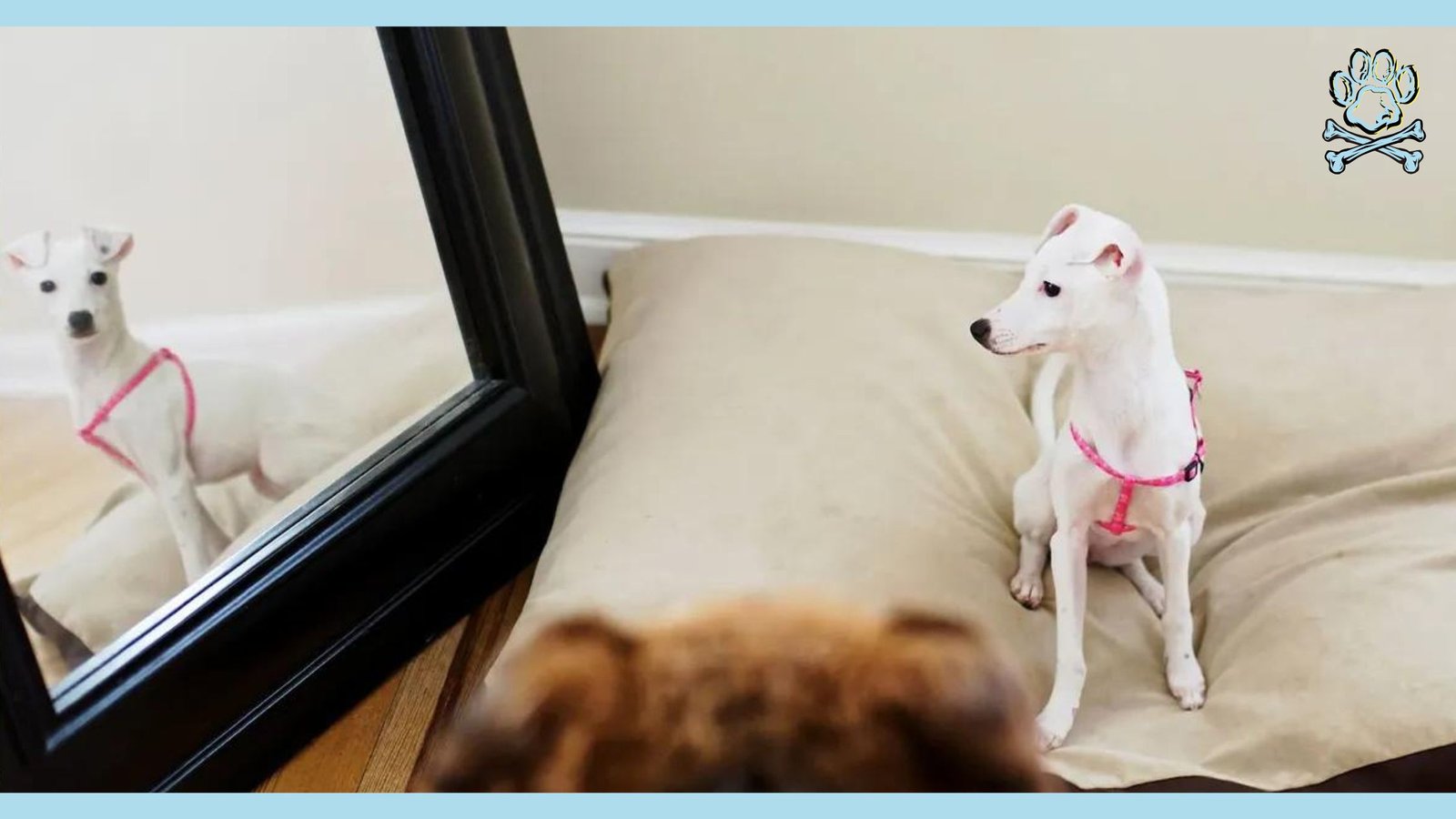
THE LIMITATIONS OF VISUAL SELF-AWARENESS AND RECOGNITION TESTS FOR DOGS
While the mirror test measures a specific type of self-awareness, it has limitations. This test primarily evaluates visual self-recognition abilities. However, dogs rely more heavily on other senses like smell. Olfaction plays a crucial role in how dogs perceive and navigate their world. Their exceptional sense of smell allows them to detect subtle scent cues that humans cannot. These olfactory inputs likely shape their self-awareness and identity. Moreover, the mirror test may not account for cultural and environmental factors influencing a dog’s behavior around mirrors. Some dogs may view their reflection as another dog, leading to confusion or disinterest.
Mirror test can’t apply for dogs
It’s also essential to consider that self-awareness can manifest in various forms beyond the ability to recognize one’s reflection. Dogs exhibit self-awareness through their problem-solving abilities, emotional intelligence has been a popular tool for assessing self-recognition in animals, it’s important to acknowledge its limitations when it comes to dogs.
Firstly, dogs heavily rely on their sense of smell for navigation, communication, and understanding their environment. Their visual acuity is much lower compared to humans, and they don’t primarily use visual cues for self-recognition. In fact, when presented with a mirror, many dogs react as if they’re seeing another dog. They may bark, growl, or even try to play with their reflection. This doesn’t necessarily mean they lack self-awareness; it just highlights the mismatch between the test and their natural abilities.
Moreover, the mirror test was originally designed for primates, who have a more similar visual system to humans. Applying the same test to dogs without considering their unique sensory reliance on scent over sight can lead to misleading conclusions about their cognitive abilities. It’s crucial to design self-awareness tests that cater to dogs’ natural strengths and preferences. This may involve using olfactory cues or observing their behavior in social situations rather than relying solely on visual tests.
🔑 Key Points: The limitations of the mirror test for assessing self-recognition in dogs stem from their heavy reliance on scent over sight, highlighting the need for species-specific self-awareness tests that cater to their unique sensory abilities.
Unveiling Dogs Olfactory Self-Recognition
Imagine being able to identify yourself and others through scent alone. For dogs, this is their reality! Their incredible sense of smell plays a crucial role in their self-perception and social interactions. Recent olfactory-based studies have shed light on dogs’ ability to recognize themselves through scent.
In one such study, Alexandra Horowitz found that dogs spent more time sniffing their own urine compared to that of other dogs, suggesting a form of olfactory self-recognition. This makes sense when you consider that dogs have a highly developed olfactory organ called the rhinarium or “wet nose.” This organ contains millions of scent receptors, allowing dogs to detect and differentiate between countless odor particles.
Dog’s Perception Of Olfactory Communication And Self-Identity
In fact, dogs’ sense of smell is so powerful that they can detect specific odors at concentrations as low as one part per trillion! That’s like finding a single drop of a specific odor in an Olympic-sized swimming pool. But how does this relate to self-recognition? Well, every dog has a unique scent profile, influenced by factors like their diet, environment, and hormones. This specific odor acts as a signature, allowing dogs to identify themselves and others.
For example, when a dog encounters their own scent on an object or in their environment, they may spend more time investigating it, as it’s familiar and meaningful to them. This behavior suggests a form of self-recognition and self-awareness. Furthermore, canines utilize scent to convey messages and gather info about their surroundings.
They can detect the emotional states and health conditions of other dogs and humans through scent alone. So, although dogs might not recognize themselves visually in mirrors, their keen sense of smell allows them to develop a unique perception of olfactory communication and self-identity. They can recognize their own scent, suggesting a form of self-awareness specific to their highly developed sense of smell.
🔑 Key Points: Dogs’ exceptional sense of smell and ability to identify their own scent indicate a type of olfactory self-recognition. This highlights the importance of considering species-specific sensory abilities when assessing animal self-awareness.
The Power of a Dog’s Nose
- Dogs possess up to 300 million olfactory receptors, while humans only have 6 million. This enables them to detect scents with incredible sensitivity.
- They can identify specific odors at concentrations as low as one part per trillion. This allows them to pick up on very faint smells.
- Dogs’ noses have separate pathways for breathing and smelling, enabling continuous scent detection without interruption.
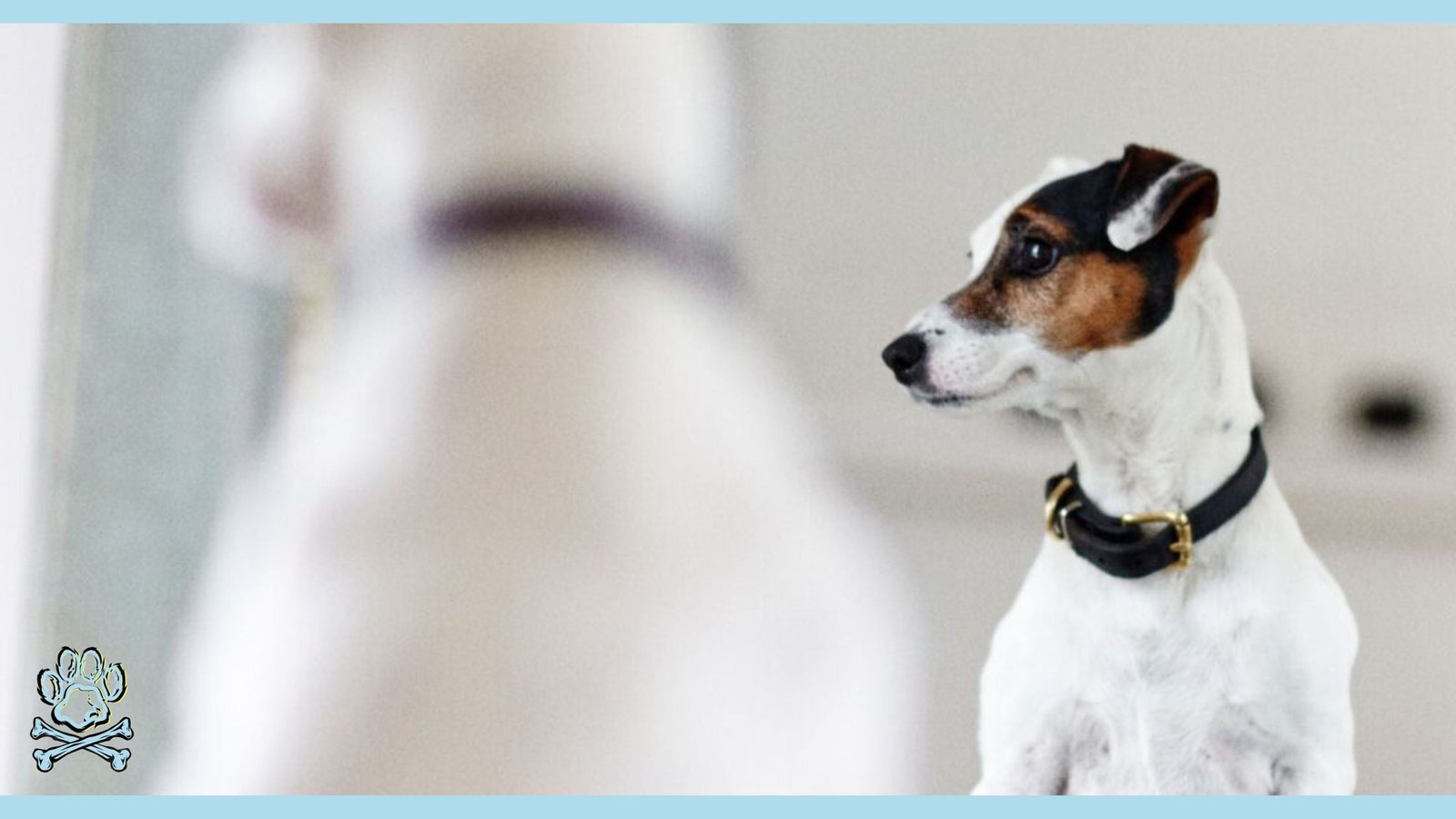
BEYOND THE MIRROR: ALTERNATIVE APPROACHES TO ANIMAL SELF-AWARENESS
While the mirror test has been the traditional method for assessing self-recognition in animals, it’s not the only way to explore their self-awareness. Alternative approaches that consider species-specific behaviors and sensory preferences can provide valuable insights into animal cognition.
Self-Recognition in Dogs and Self-Awareness
One such approach involves olfactory-based studies, like the sniff test of self-recognition. This test takes into account dogs’ highly developed sense of smell and their ability to recognize their own scent. It provides a more species-appropriate way to assess their self-awareness.
Another approach is to observe animals’ behavior in social contexts. For example, if a dog consistently responds to their name or exhibits self-restraint in the presence of food, it might indicate a level of self-awareness.
Moreover, some researchers argue that self-awareness exists on a spectrum and can manifest in different ways across species. Instead of relying on a single test, a more comprehensive evaluation of an animal’s cognitive abilities and behaviors may provide a clearer picture of their self-awareness.
Study on dog behavior conducted by Alexandra Horowitz
In this study, dogs were presented with scent samples from themselves and other dogs. The researchers observed whether the dogs spent more time investigating the unfamiliar scents compared to their own. Dogs that spent less individual study on dog behavior conducted by Alexandra Horowitz. By observing dogs’ reactions to their own scent and those of others, researchers can gain a better understanding of their self-recognition abilities.
These studies often involve presenting animals with scents from different sources, such as their own urine or feces, and comparing their behavior to control scents. If the animal spends more time investigating their own scent, it suggests a form of self-recognition.
It’s important to design experimental setups that cater to the animal’s natural behaviors and sensory strengths. For dogs, this might involve using olfactory cues or observing their interactions with familiar and unfamiliar individuals. By embracing alternative approaches to studying animal self-awareness, we can develop a more nuanced understanding of how different species perceive themselves and their environment.
🔑 Key Points: Exploring alternative approaches to assessing self-awareness, such as olfactory-based studies and observing social behaviors, can provide valuable insights into animal cognition beyond the limitations of the mirror test.
Insights into Canine Perception of Smell and Its Implications
Dogs possess an extraordinary sense of smell that shapes their perception of the world around them. Their olfactory abilities are not only crucial for navigation and communication but also play a significant role in their cognitive processes and emotional experiences. When a dog encounters a scent, their brain processes the odor particles differently than humans. While we primarily rely on visual cues, dogs create a mental map of their environment based on scent.
This allows them to detect and differentiate between countless odors, even at minute concentrations. Interestingly, dogs’ perception of smell is influenced by their previous experiences and associations. For example, if a dog has a positive experience with a particular scent, such as the smell of their favorite treat, they may exhibit excitement or anticipation when encountering that scent in the future.
Understanding dogs’ perception of smell
Similarly, if a dog associates a specific scent with a negative experience, like a visit to the vet, they may display anxiety or avoidance when detecting that odor. This highlights the emotional significance of scent in a dog’s life. Dogs have an amazing ability to communicate using scents. They can detect pheromones and other chemical signals.
These smells tell them about other dogs’ emotions, health, and social status. For example, when a dog smells another dog’s urine, it learns that dog’s age, gender, and if it can mate. This olfactory communication helps dogs establish social ranks and maintain harmony in their pack. Understanding how dogs perceive smells can help create environments for their olfactory needs.
We can provide scent enrichment activities like nose work games or exposing them to different odors in a controlled setting. This stimulates their sense of smell and encourages natural behaviors. By recognizing smell’s vital role in a dog’s life, we gain deeper insight into their behavior, emotions, and thinking processes. Their incredible sense of smell shapes how they experience the world.
🔑 Key Points: A dog’s extraordinary sense of smell influences not just how they perceive the world, but also plays a huge part in their cognitive abilities, emotional experiences, and social communication with other dogs and humans.
The Emotional Significance of Scent for Dogs
Dogs associate certain scents with positive or negative past experiences. These smell memories can trigger emotional responses like joy, fear, or aggression. They can also smell pheromones and chemical cues that convey emotional states.
Providing activities that stimulate their sense of smell, like scent enrichment toys or games, can boost a dog’s emotional well-being. Engaging their powerful noses satisfies natural instincts and promotes calm, contented behavior.
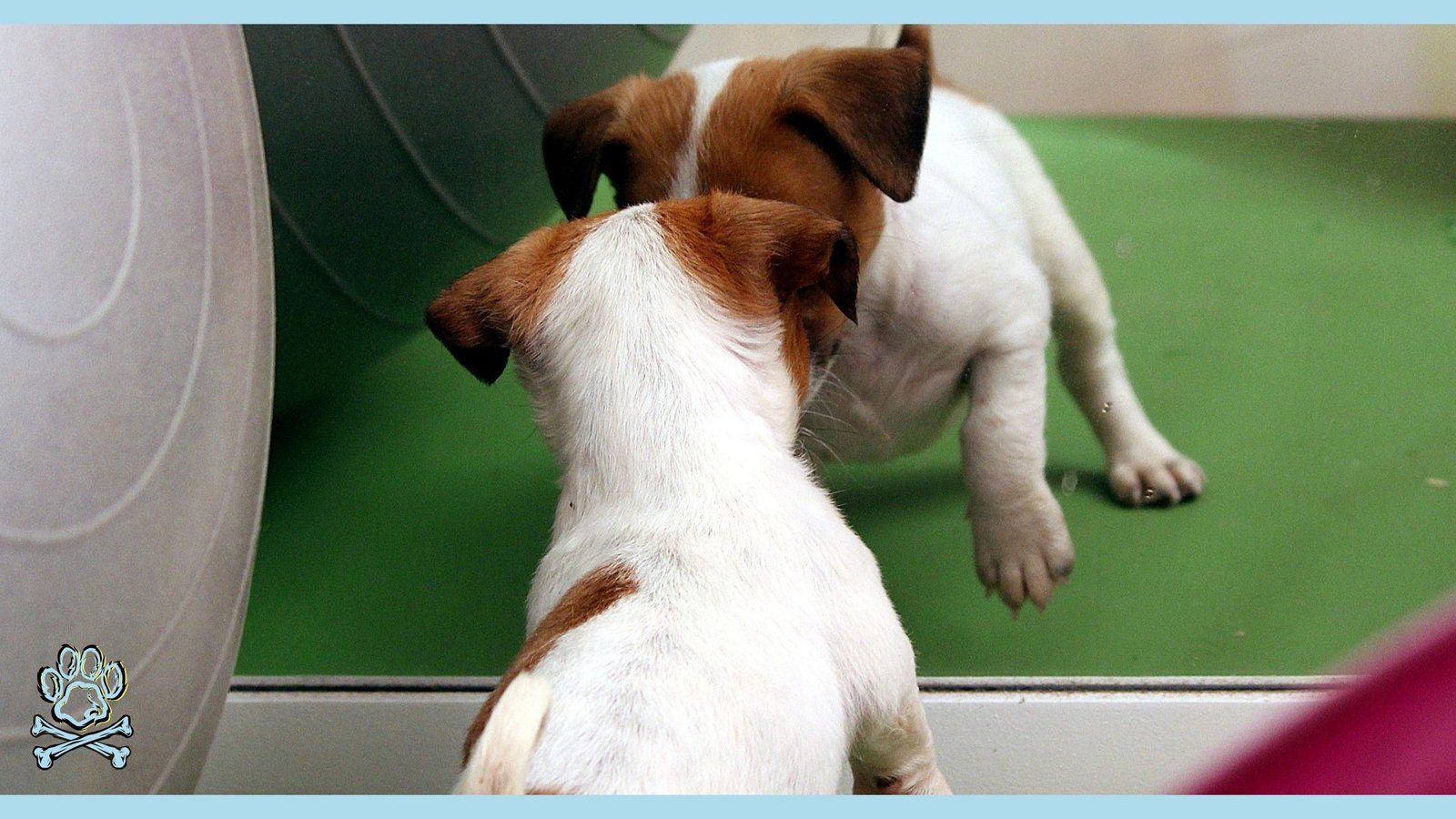
THE SIGNIFICANCE OF OLFACTORY CUES IN DOG BEHAVIOR AND IDENTITY
Dogs heavily depend on their powerful sense of smell. Their incredible olfactory abilities shape behavior, social connections, and identity. From birth, pups use scents to understand their world and find their place in their pack. Canines form close bonds through smell. They prefer familiar aromas like owners or dogs they know well. Positive links create these preferences. For instance, a dog may adore their human’s shirt or bed scent. Those smells represent comfort and safety.
The Dog’s Smell Play
Pups often engage in “smell play” by sniffing intriguing objects or individuals. They use their noses to investigate things that pique interest. This exploratory behavior stems from their olfactory curiosity. Additionally, dogs have an amazing olfactory organ structure.
With millions of scent receptors and a big olfactory bulb in their brains, dogs can detect and process countless odors accurately. Their heightened sense lets them identify individuals, navigate environments, and communicate socially. Through scent marking and investigation, dogs convey their identity, emotions, and rank. Odors provide vital social cues about dog-to-dog dynamics. This olfactory system aids canine interaction and hierarchy establishment.
Dogs have an extremely powerful sense of smell. Their noses allow them to detect and understand various scents. These scents give important information about their social group members. Dogs can sense even small changes in hormones, health, or emotions through scent. This helps dogs respond suitably to their pack mates.
🔑 Key Points: Scents are vital for dogs. They use their exceptional sense of smell for behavior, social interactions, and recognizing others. Dogs rely heavily on their sense of smell to understand their world and communicate.
The Role of Smell in Canine Social Interactions and Emotions
For dogs, smell is more than just a sense. It’s a language they use. Dogs depend greatly on their amazing ability to smell. This helps them navigate complex social situations and express emotions. When dogs meet, they sniff and investigate each other’s scent. This behavior lets them gather key details. They can identify the other dog, its emotional state, and intentions.
By detecting pheromones and other scent cues, dogs understand if the other dog is friendly, anxious, or threatening. Moreover, the social context of a scent impacts a dog’s emotional response. For instance, if a dog smells a familiar, friendly dog, it may show excitement and happiness. This could include tail wagging and relaxed body language.
The Communication Pheromones
On the flip side, if a dog encounters an unfamiliar or aggressive dog’s scent, it may show fear or defensiveness. This could involve growling or raised hackles. Dogs use smell to share their feelings with others. When a dog feels anxious or stressed, it releases certain odors. These scents let other dogs know the dog needs comfort.
On the other hand, happy dogs make different smells. These smells signal the dog feels good. In short, smell helps dogs socialize and show emotion. They gather information, understand intent, and share feelings through odors.
🔑 Key Points: Smell is very important for dogs. It helps them interact with others and express themselves. Dogs can pick up on cues and feelings through scents. They use odor to signal their own emotions too.
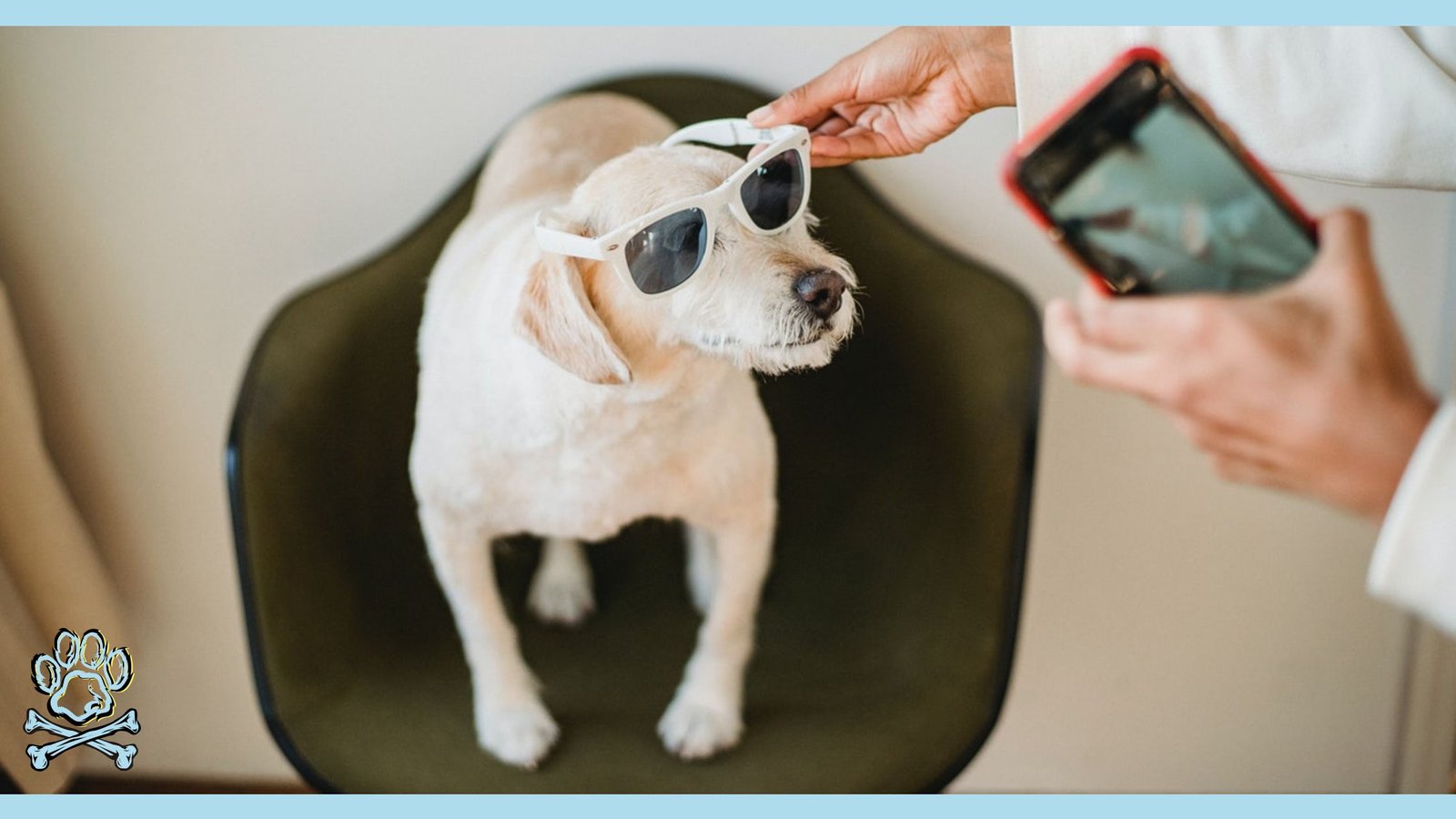
CHALLENGES IN EVALUATING DOG SMELL PREFERENCE: METHODOLOGICAL INSIGHTS
It’s hard to figure out which smells dogs like best. There aren’t many studies on this topic. So, we can’t make firm conclusions yet. To evaluate smell preferences, researchers must be very careful.
Dog’s Smell Preference
To see what smells dogs prefer, studies need strong methods. They must account for things like age, breed, health, and past scent experiences. These factors can impact a dog’s responses. The setting also matters. A dog may react differently to the same smell at home versus a new place. Stressful situations can change how a dog behaves toward odors too. So, the context is crucial when testing preferences.
Different dogs have distinct smell preferences. What appeals to one dog may not interest or even repulse another. To accurately assess canine smell preferences, researchers must design experiments carefully. They must account for individual differences, contextual factors, and potential variables that could influence results.
🔑 Key Points: Evaluating dogs’ smell preferences requires experiments that consider individual variations, contextual factors, and potential confounding variables. This ensures accurate conclusions about dogs’ olfactory preferences.
Connecting Dog Behavior with Environmental Factors
A dog’s behavior and preferences aren’t solely determined by innate abilities. The dog’s immediate environment, including living conditions, social interactions, and experiences, significantly shapes their behavior and emotional well-being. Dogs raised in natural environments with ample exploration and socialization opportunities may exhibit different behaviors and preferences compared to those raised in restricted or urban settings.
Additionally, human influence plays a vital role in dog behavior. How humans interact with, train, and structure dogs’ daily routines profoundly impacts their behavior and emotional state. For example, dogs raised in loving, enriching environments tend to be more confident, social, and less anxious.
On the other hand, dogs subjected to neglect or abuse may develop fear, aggression, or other behavioral issues. Thus, understanding the interplay between a dog’s innate abilities, environment, and human influence is crucial for promoting their overall well-being and fostering positive behaviors.
🔑 Key Points: A dog’s behavior and preferences are significantly influenced by their environment and human interactions. Promoting positive behavior requires considering both innate abilities and environmental factors, including living conditions, socialization, training, and daily routines.
Rethinking Dogs Self-Recognition and Awareness
As we delve into the fascinating world of canine cognition and behavior, it becomes evident that our understanding of self-recognition and awareness in dogs is far from complete. While the mirror test has been a valuable tool for assessing self-awareness in some species, it may not be the most appropriate measure for dogs due to their reliance on olfactory cues.
Alternative studies, such as those exploring dogs’ responses to their own scent, suggest that canines may possess a form of self-recognition based on their exceptional sense of smell. By recognizing their own unique odor signature, dogs can differentiate themselves from others and establish their identity within their social group.
Moreover, the role of smell in canine social interactions and emotional expression highlights the importance of olfactory cues in their daily lives. Dogs use scent to communicate, gather information about their environment, and establish social bonds with their human and canine companions. As we continue to explore canine self-awareness, it is crucial to consider their species-specific sensory abilities and design experiments that cater to their natural strengths.
A Quick Summary about Self-Recognition and Self-Awareness in Dogs
In unraveling the captivating realm of canine self-recognition, we’ve embarked on a journey that challenges conventional assessments of intelligence and awareness in our furry companions. Our exploration transcends the limitations of visual self-awareness tests, shedding light on the profound significance of olfactory cues in shaping dogs’ identities. By delving into alternative studies and behavioral insights, we’ve unearthed a nuanced understanding of how dogs perceive themselves and interact with their surroundings.
As we near the end of this informative journey, let us reflect on the traditional beliefs about dog intelligence. We should now embrace the complex way dogs perceive the world through scent. By understanding how scent shapes dog behavior and identity, we gain new appreciation for their rich experiences. As you learn about how dogs recognize themselves and interact with others, remember that every tail wag and sniff reveal insights into our beloved companions’ intricate world.
Thank you for joining us in this enlightening exploration,
where curiosity and compassion unite to reveal the true essence of self-recognition in dogs.
